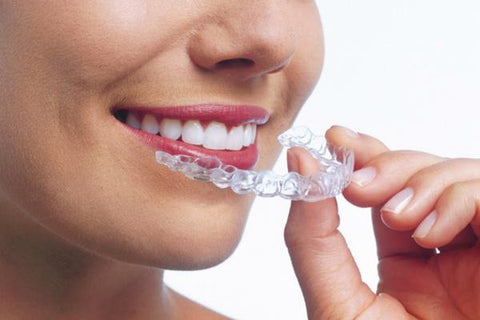How does Invisalign Technology Work?

Invisalign is one of the newest orthodontic technologies in the market, but it is still improving all the time. It works by using a series of clear aligners that gradually move the teeth into position. Invisalign works in this way to create a gradual movement of the teeth that will achieve the best alignment and a perfect smile. But how does it work?
Many people want straighter teeth, but they don’t want to have visible metal brackets fixed to the front of their teeth. Does this sound like you? Then you will definitely want to consider Invisalign.
How do they work?
Invisalign aligners are (the clue is in the name) virtually invisible. They include no metal and are custom made to fit your teeth. The aligners work in a series of trays that gradually move your teeth into place. Each tray is manufactured so that the teeth are slightly straighter than the previous tray. Your teeth will typically move up to 0.25mm per aligner. Every two weeks, you will receive a new set of Invisalign aligners, slowly moving your teeth towards their ideal positions. Invisalign is commonly used to correct crowded, gappy and overlapping teeth but they may also be able to fix some malocclusions such as an overbite, underbite, open bite and overjet.
How do I place them in my mouth?
Simply pop the aligners in and you are ready to go. No uncomfortable and unsightly brackets necessary. Invisalign aligners are clear and barely noticeable, which makes them perfect for both adults and teens who want a more discreet straightening option.
If you would like to know more about Invisalign aligners then please get in touch with us today on 0161 884 1481.
- Tags: Adult braces clear aligner clear aligners Clear braces hidden braces Invisalign invisalign aligner Invisalign aligners invisalign braces invisalign clear aligner Invisalign Manchester Invisalign treatment Invisalign treatment in Manchester invisible appliance invisible braces orthodontic appliance orthodontic treatment Orthodontics straight teeth teeth straightening traditional braces
- Mohammad Malik

